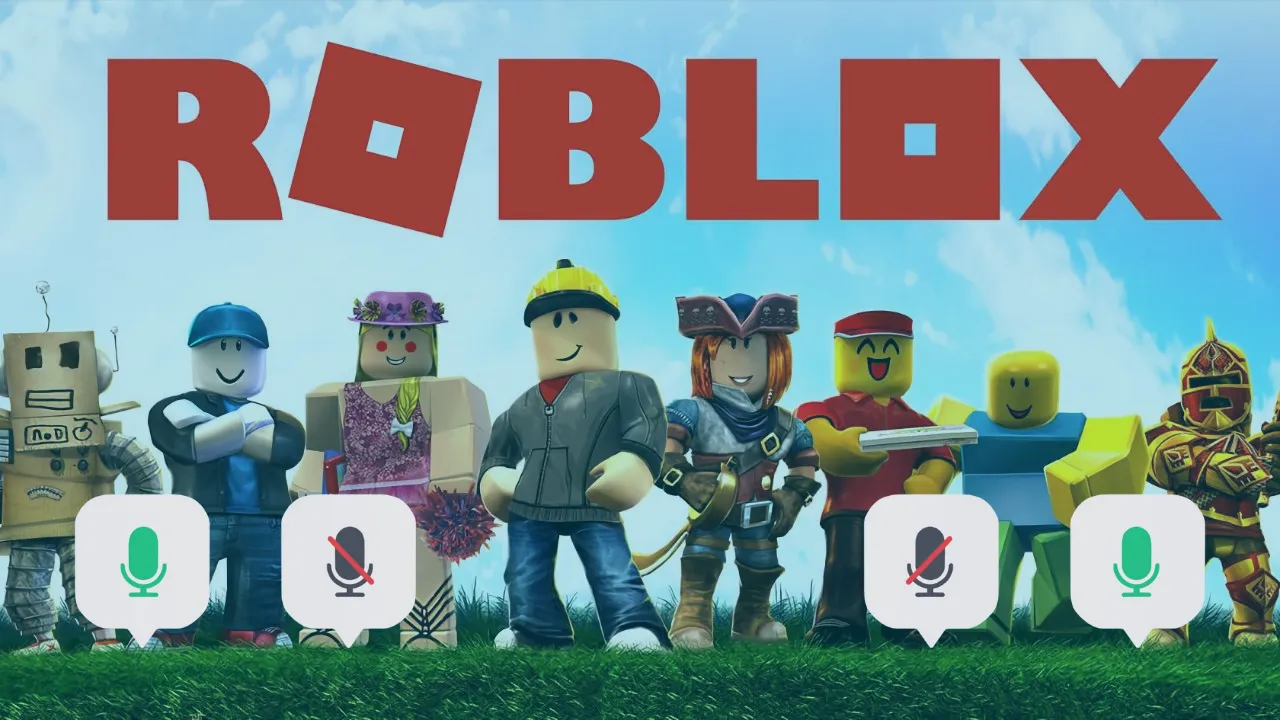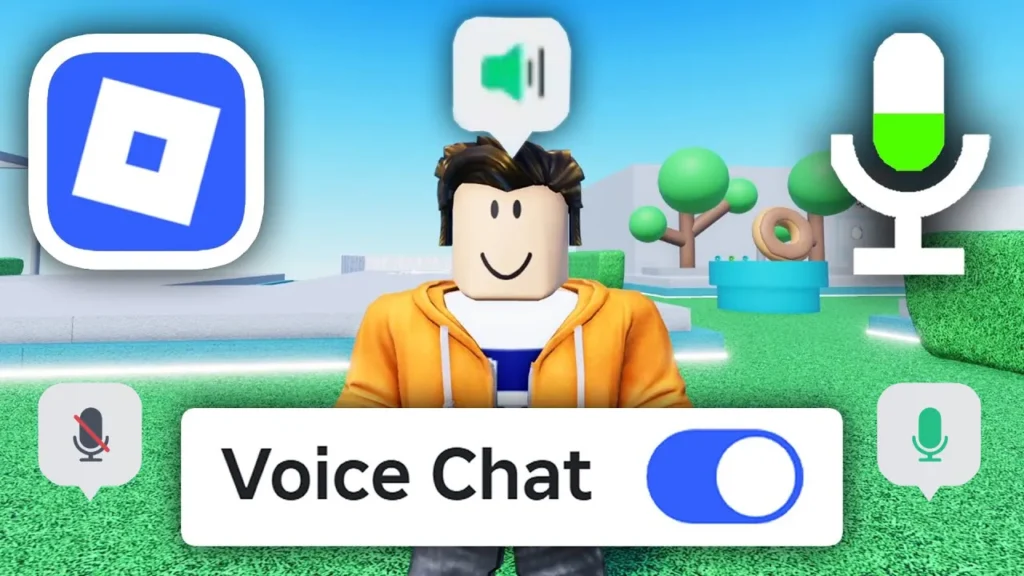Communication on Roblox has come a long way since the days when players could only exchange short text messages in chat windows.

Today, one of the most groundbreaking upgrades to the platform’s social experience is Spatial Voice—a feature that mirrors real-world conversations inside digital worlds.
With Roblox attracting more than 88.9 million daily active users in Q3 2024, the demand for realistic, interactive communication has never been stronger.
This guide breaks down everything you need to know about Roblox voice chat: what Spatial Voice is, how it changes gameplay, its safety features, and the ongoing debates in the community.
Whether you’re a parent ensuring your child’s safety or a player eager to dive deeper into immersive conversations, this article covers it all—without the complicated tech jargon.
What Is Spatial Voice?
Spatial Voice is Roblox’s proximity-based voice chat system designed to replicate the way people naturally talk in physical spaces.
Unlike traditional systems where everyone hears voices at the same volume, Spatial Voice adjusts sound based on how close avatars are to one another. Stand next to someone, and you’ll hear them clearly; walk away, and their voice fades.
Even more impressive, the system adds directional sound. If someone is speaking to your left, their voice comes through your left ear. This real-time processing makes conversations feel authentic, not artificial.
The impact on social interaction is huge. Players describe a sense of presence inside virtual worlds—conversations flow naturally as groups form and break apart. Games have adopted this feature for everything from team strategy to casual hangouts, making Spatial Voice a cornerstone of modern Roblox experiences.
How It Transforms Gameplay

The shift from text-only communication to voice has reshaped Roblox culture. Players can now exchange jokes, share emotions, and coordinate strategies without typing.
In roleplay games, this adds an entirely new layer of immersion. Players take on accents, use dramatic tone shifts, and bring characters to life in ways text never could. Storytelling feels natural and dynamic.
Team-based games benefit enormously. Obstacle courses become easier when teammates shout live directions, strategy games gain a tactical edge with instant feedback, and collaborative building sessions feel like creative workshops.
Developers have also embraced voice chat as a design tool. Some games are now voice-first: murder mysteries where players interrogate each other verbally, karaoke clubs for live performances, and even talk-show style experiences where players host interviews.
Voice chat is no longer an optional add-on—it’s becoming an essential ingredient in how developers imagine their games.
Popular Voice-Enabled Experiences
Roblox now features thousands of games with voice integration, each using the system in unique ways. Here are some highlights:
- Brookhaven RP – With over 58 billion visits by January 2025, this suburban roleplay world feels more alive than ever. From shopping trips to house parties, casual conversations with voice make the town feel like a bustling community.
- Mic Up – A social hub created for Spatial Voice, offering themed rooms for debate, music, or casual chats. It’s a favorite for players testing out their setup or making new friends.
- Murder Mystery 2 (Voice Edition) – Adds tension and psychology to the classic whodunit. Suspects talk their way out of accusations while players must rely on tone and persuasion as much as gameplay clues.
- Creek Voice Games – Experiences designed entirely around spoken communication, such as describing objects or coordinating paths through obstacle courses.
Notably, some games use voice as an optional extra, while others require it as the core mechanic. This ensures there’s something for everyone—whether you’re excited about voice chat or prefer to stick with text.
Safety and Privacy First
With real-time conversations, safety becomes critical—especially on a platform with millions of under-13 users. Roblox has built multiple layers of protection:
- AI moderation: Advanced machine learning scans millions of minutes of audio daily, detecting violations within 15 seconds across eight languages.
- Proximity limits: Only nearby avatars hear you, preventing unwanted eavesdropping.
- User controls: Players can mute, block, or report others directly. Audio context is captured for moderators when reports are filed.
- Warnings: On-screen notifications educate players about violations, reducing repeat behavior.
- Parental settings: Guardians can disable voice chat, control communication options, and restrict features for younger users.
In November 2024, Roblox announced that players under 13 can only use limited broadcast voice features, unless parents explicitly grant more access.
Players are also reminded to keep personal details private and regularly review their privacy settings. While Spatial Voice enhances realism, online safety rules remain the same.
Troubleshooting Voice Chat
Voice chat doesn’t always work smoothly, and understanding common issues saves frustration. The most frequent problems include:
- Hardware issues: Roblox must recognize your microphone. Incorrect default audio devices often cause problems.
- Game compatibility: Not all experiences support Spatial Voice. Look for the microphone icon on the game page.
- Privacy permissions: Operating systems and browsers require explicit microphone access—separate from Roblox’s settings.
- Safety system interventions: Automated moderation sometimes mutes players temporarily if it detects possible violations.
A systematic check—starting with whether the game supports voice, then confirming permissions, then testing hardware—usually resolves most problems.
Community Reactions and Debates
Since its beta release in 2021, Spatial Voice has stirred strong reactions.
Excitement came first. Players loved the realism, content creators found new opportunities, and anticipation for wide rollout grew rapidly.
But concerns soon followed—mainly about younger players. With nearly 30 million daily users under 13, parents and community members debated whether Roblox should include real-time voice at all. Age verification, moderation quality, and exposure to inappropriate content became heated topics.
The fairness debate also continues. Voice-enabled players often enjoy tactical advantages in team games, while those restricted by age or technical limitations may feel left out. This divide challenges developers to design inclusively.
At the same time, voice chat has unlocked new revenue streams. Reports from 2024 show that voice-enabled games earn significantly more Robux than non-voice titles. This commercial success drives innovation but also raises accessibility concerns.
Overall, community sentiment reflects cautious acceptance: most players now view voice as a core feature, while still demanding strong protections.
Tips for a Better Voice Chat Experience
To get the most from Spatial Voice, players should consider both technical setup and social etiquette.
- Invest in audio quality: A decent microphone or headset makes a huge difference. Surveys show nearly 70% of players mute teammates with poor audio.
- Set up your environment: Use headphones to avoid echo, keep your mic away from keyboards, and adjust sensitivity to reduce background noise.
- Choose the right spaces: “Chill” servers encourage friendlier conversations, while competitive lobbies may feature harsher communication.
- Practice etiquette: Let others finish speaking, avoid dominating the chat, and mute yourself for sneezes, coughs, or noise.
- Blend text and voice: Quick tactical calls are great via voice, but usernames, links, or complex instructions work better in text.
Positive experiences often depend on small courtesies—greeting teammates, offering supportive comments, and respecting different playstyles.
Conclusion: A New Era for Roblox Communication
Spatial Voice has transformed Roblox from a text-based platform into a dynamic soundscape where millions of players connect more naturally.
The technology has opened doors to new genres, empowered developers to create innovative content, and even reshaped Roblox’s economy. At the same time, it has sparked important debates about safety, accessibility, and fairness.
With robust moderation, parental controls, and evolving policies, Roblox continues balancing innovation with protection. Recent restrictions for under-13 users highlight the company’s awareness of these responsibilities.
Looking forward, voice chat is only the beginning. As audio technology advances, developers will continue pushing creative limits—introducing richer storytelling, more immersive environments, and gameplay that thrives on communication.
From text bubbles to directional audio, the journey marks a milestone in the future of virtual interaction. Roblox voice chat isn’t just a feature—it’s a foundation for how players will talk, collaborate, and connect in the metaverse.


